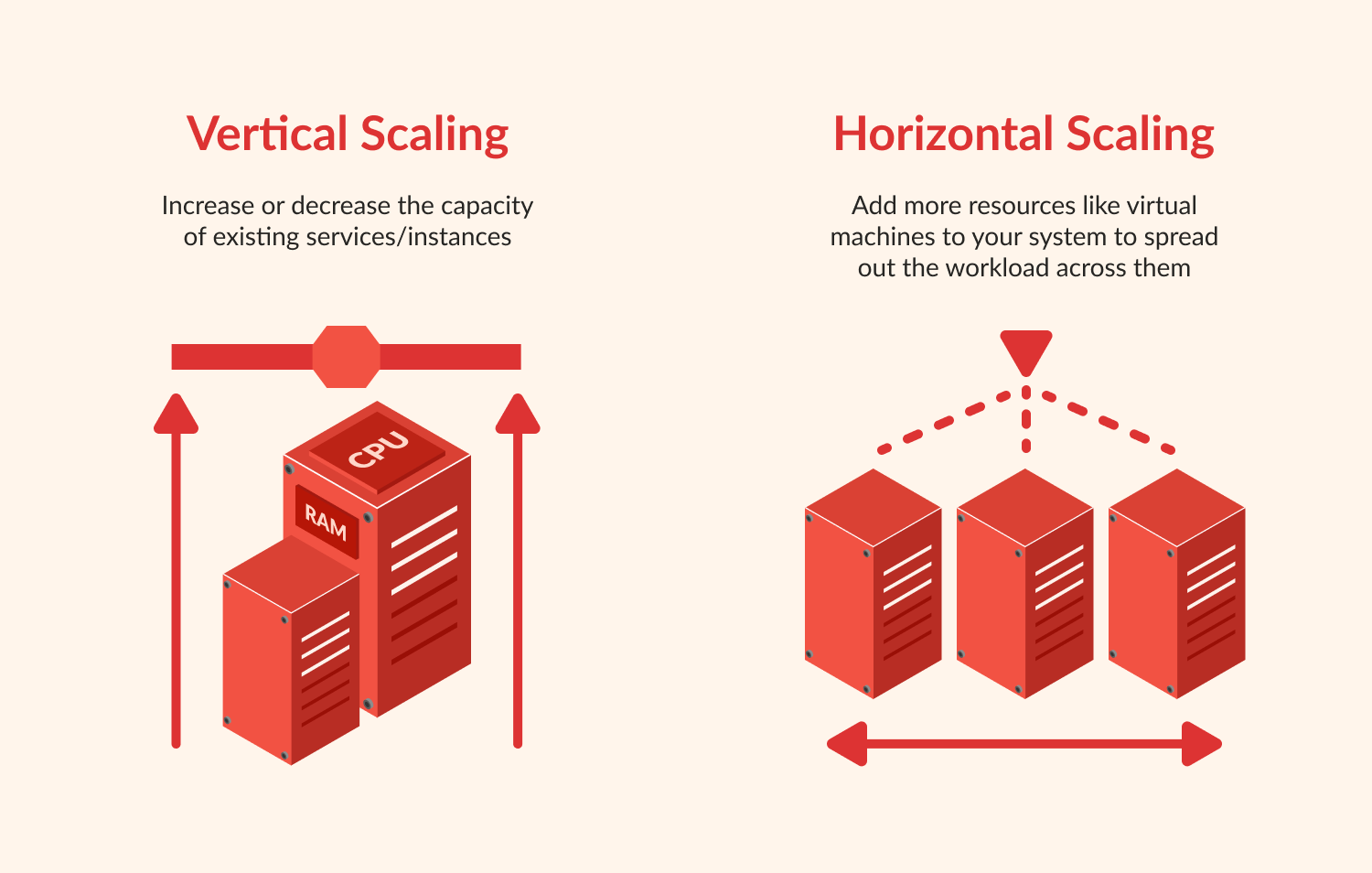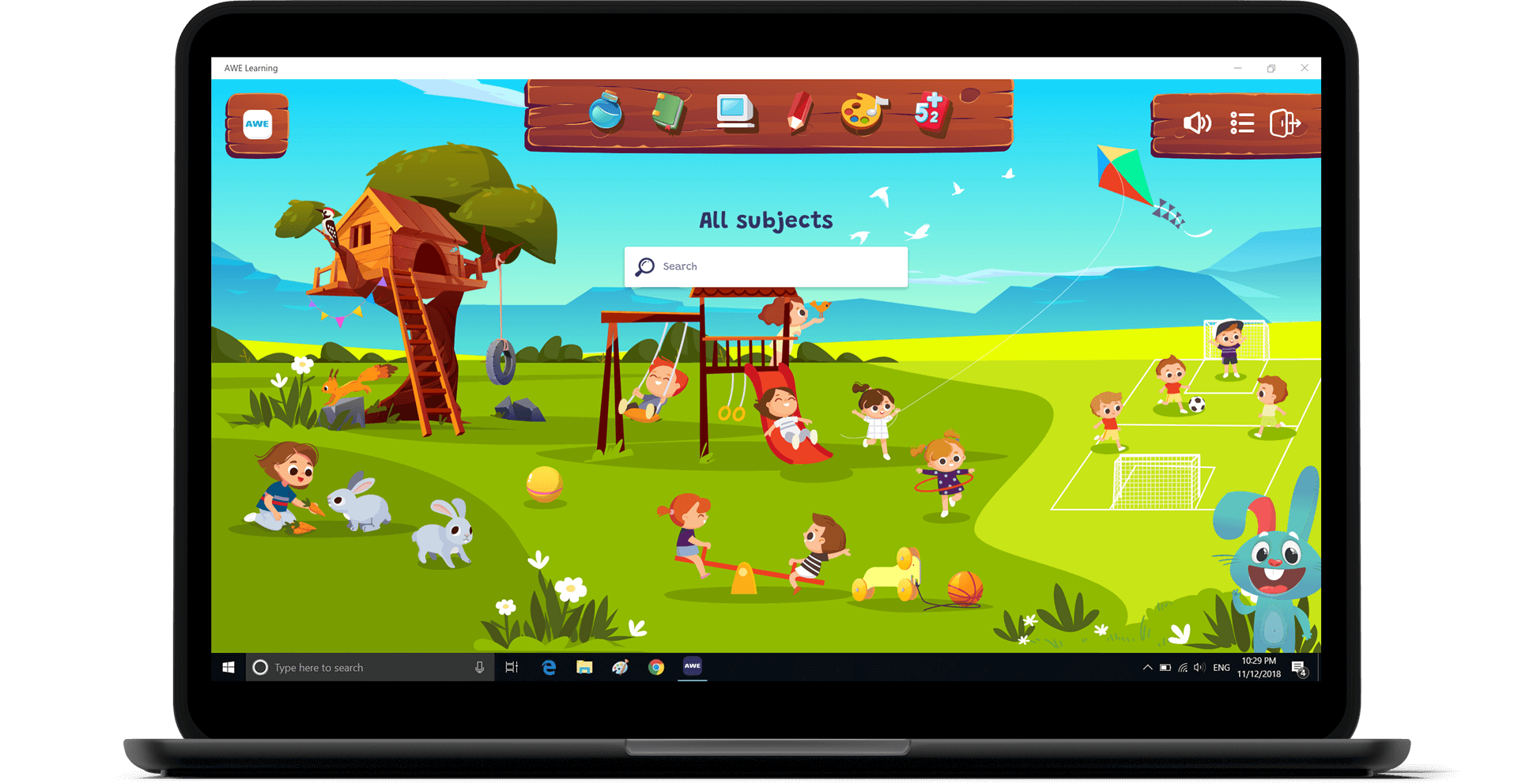The saying’s true: What got you here won’t get you there! Scaling is more than adding servers; it’s about designing for sustainable growth from day one. While MVPs often get away with patchy architecture, real traction demands a system that performs under pressure. It’s crucial for start-ups to build a solid foundation if they’d like to achieve rapid growth and long-term success.
At Redwerk, we’ve seen what works and fails when digital products scale. Since 2005, we’ve helped businesses design and implement scalable architectures from the ground up. We also audit existing solutions and offer cost-effective fixes. This article shares proven architectural principles for growing real-world platforms without compromising performance, stability, or speed. There’s no theory; just tenured strategies we apply to build scalable software that stands the test of time, users, and data.
1. Modularity & Loose Coupling
Building complex systems requires smart design. Modularity means breaking down a large system into smaller, independent parts. Loose coupling ensures these parts connect without relying too heavily on each other. This approach simplifies changes and reduces dependencies across the system, making the software architecture easier to maintain and update.
How to achieve it:
- Design each component with a clear job.
- Limit how much these components interact.
- Consider microservices architecture—split an application into small, independent services. For a deeper dive into the characteristics and benefits of this architectural style, explore foundational insights on microservices.
- Ensure these services communicate through clear interfaces.
- Use this design to improve software architecture scalability, allowing parts to be developed and deployed separately.
2. Software Architecture Scalability
Software architecture scalability is crucial for growth. It ensures that your scaling software handles more users, transactions, or data. The system will also continue to perform well under heavy loads, preventing slowdowns and keeping users satisfied as your business expands. A highly scalable system adapts to demand.
How to achieve it:
- Focus on horizontal scaling—add more servers or instances to share the workload. It’s more flexible and cost-effective than upgrading a single machine.
- Plan for database scalability architecture as well.
- Use techniques like sharding to split data across multiple databases.
- Implement replication to create copies for faster access and backup.
- Utilize caching to store frequently used data closer to the application, reducing database load.

3. Stateless Architecture
Stateless architecture is vital for software scalability. This means that each request to the server includes all the information needed. Servers do not remember past interactions or user sessions, making the system more resilient. It also allows easier work distribution across many servers, which is key for building scalable software.
How to achieve it:
- Design services that are self-contained for each request.
- Avoid storing session data directly on individual servers.
- Use external, shared data stores for session management if needed.
4. Fault Tolerance & Resilience
Even the best systems can face issues. Fault tolerance and resilience ensure your system works when parts fail, preventing total system crashes. They also maintain system reliability even during unexpected problems. Building a scalable system means it can handle stress and recover quickly.
How to achieve it:
- Implement circuit breakers—stop continuous requests to a failing service.
- Use retries—allow a service to try a request again after a short delay.
- Set up failover mechanisms. If one component fails, another takes over automatically.
- Plan for redundancy. Use load balancers to distribute traffic. Replicate databases to ensure data is always available.
- Consider graceful degradation. If a non-critical part fails, the system continues functioning with reduced features instead of stopping completely.
5. Performance Optimization
Fast and responsive systems are critical. Users expect quick loading times and smooth interactions. Slow performance leads to frustrated users and business losses. Optimizing performance ensures your software delivers a great user experience. It directly supports business success and the long-term growth of your scalable software architecture.
How to achieve it:
- Utilize caching—use Content Delivery Networks (CDNs) for static content.
- Implement in-memory caches for frequently accessed data to reduce the load on your main servers and databases.
- Optimize database queries and indexing. Efficient queries retrieve data faster. Proper indexing speeds up the data lookups process.
- Streamline your codebase—use techniques like lazy loading, where resources load only when needed. Implement efficient algorithms to process data quickly.
6. Scalable System Security
Security is critical for any scalable system. It protects sensitive user data and guards system resources from unauthorized access or cyber threats. Strong security builds trust with users and is a core part of ensuring overall system reliability for your scalable software architecture.
How to achieve it:
- Implement the principle of least privilege—give users and services only the minimum access they need to do their jobs.
- Use robust authentication and authorization. Examples include OAuth and JSON Web Tokens (JWT) to verify who can access what.
- Encrypt data when it moves (in transit) as well as when it sits in storage (at rest)—this keeps information safe even if intercepted.
- Practice secure API design. Use rate limiting to prevent abuse. Validate all inputs to block malicious data.
7. Maintainability & Extensibility
As business needs change and new technologies emerge, software systems must adapt over time. Maintainability and extensibility ensure your scalable software can evolve. This avoids costly, major rewrites. For older systems, legacy modernization can transform outdated software into modern, scalable solutions, ensuring they can adapt and support long-term growth.
How to achieve it:
- Write clean code. Follow principles like SOLID to make code easy to read and understand.
- Keep code modular and well-documented. Clear documentation helps new team members quickly grasp the system.
- Use version control systems like Git to manage code changes. They also support collaborative development and allow easy rollbacks if needed.
8. Testing & CI/CD
Testing is fundamental for system reliability. It ensures your scalable software architecture works as planned and confirms the system handles failures correctly. Continuous Integration (CI) and Continuous Deployment (CD) automate quality checks. This means the system is validated throughout its entire lifecycle. Bugs are caught early, reducing risks and costs.
How to achieve it:
- Implement comprehensive testing, including unit tests for small code parts. Use integration tests to check how parts work together. Apply end-to-end tests to verify the entire system flow.
- Utilize Test-Driven Development (TDD). Write tests before writing code to improve code quality and test coverage.
- Set up CI/CD pipelines to automate building, testing, and deploying code changes. Tools like Jenkins or GitLab CI integrate new code frequently. They ensure continuous validation and faster delivery of reliable software.
- Consider an SDLC audit of your software development process for a comprehensive review.
9. Observability & Monitoring
Understanding your system’s behavior is crucial. Observability and monitoring provide real-time insights. They help identify performance bottlenecks quickly and allow for fast issue resolution in production. This is essential for maintaining scalability in software architecture and ensuring high system reliability.
How to achieve it:
- Implement robust logging—record detailed information about system events.
- Track key performance indicators (KPIs) like response times, error rates, and resource usage.
- Use distributed tracing to follow requests across multiple services.
- Deploy monitoring tools to visualize data and detect anomalies. They provide alerts for potential problems, allowing quick actions.
10. Cloud-Native Design & Resource Management
Cloud computing is key for modern, scalable software architecture. It offers elastic software scalability, which means resources adjust automatically to demand. Cloud services also provide managed solutions, reducing operational burden. They help control costs, optimize resource use for long-term growth, and build a truly scalable architecture. Effective budget planning for software projects is also essential to managing these resources efficiently.
How to achieve it:
- Embrace Infrastructure as a Service (IaaS) or Platform as a Service (PaaS). These cloud models provide flexible computing resources.
- Dynamically provision resources—scale up or down automatically based on user load.
- Regularly review infrastructure costs and optimize cloud spending to ensure cost-effectiveness.
- Design your applications to be cloud-native—build them to take full advantage of cloud features and services. For a comprehensive guide on building efficient cloud applications, refer to cloud best practices from leading cloud providers.
Mastering Scalable Software Architecture
We’ve just finished exploring 10 fundamental principles for building scalable software architectures. As you can see, well-designed architecture is more than a technical blueprint; it’s the strategic foundation for sustained success and innovation. At Redwerk, we apply these principles daily to build future-proof systems.
Our expertise in building architecture from scratch, as well as software scaling, ensures your product can grow efficiently. Since 2005, we have delivered over 250 projects for businesses across North America, Europe, Australia, and New Zealand, proving our ability to create reliable and adaptable solutions.
Our solutions include:
- SaaS Development Services: We create scalable SaaS solutions that work on a long-term basis. See how we developed C!A, a 100% ADA-compliant e-government SaaS used by welfare divisions across the USA.
- Software Development from Scratch: We build projects from the ground up. Learn how we ideated and built Tingl, an innovative blockchain messenger for exclusive chat privacy.
- DevOps Consulting Services for Seamless Automation: Our modern DevOps approach saves time and budget. With our consulting services, you can upgrade your solution within months, as we did for the European Parliament’s e-voting platform.
Build a scalable, reliable foundation for your product. Contact us today for a free consultation. Share your project details, and we’ll schedule a call to discuss your needs.
FAQ
What does scalable mean in software?
Scalable software means a system can handle growing work or users without losing performance. It can effectively expand its capacity to meet increased demand. This ensures the application remains fast and reliable as your business grows. Understanding scalable software is crucial for long-term success, allowing for efficient resource utilization and continuous operation.
What’s the difference between scalable and flexible software architecture?
Software scalability refers to a system’s ability to handle increased load or growth. Flexibility, on the other hand, means the software architecture can easily adapt to new features or changing business requirements. While related, a flexible system isn’t always scalable, and vice versa. A truly scalable software architecture combines both, allowing for growth and adaptability.
Why is stateless design important for scalable systems?
Stateless design is crucial because servers don’t store information about past user interactions, each request is independent. This makes it easy to distribute requests across many servers, improving load balancing and resilience. If a server fails, another can immediately take over without losing user data. This is a core principle for building a highly scalable and reliable scalability architecture.
When should performance testing be integrated into scalable software design?
Performance testing should be integrated early and continuously throughout the design and development phases. Here’s why:
- Early Identification of Bottlenecks: Integrating performance testing early allows you to identify potential scalability issues and performance bottlenecks when they are cheaper and easier to fix.
- Informed Architectural Decisions: Performance data guides choices related to technology stacks, database design, caching strategies, and communication patterns.
- Continuous Validation: As the application evolves with new features and changes, continuous performance testing ensures that scalability is not compromised.
Learn how we helped AWE Learning migrate from on-premises to the cloud, and reach users beyond the USA by implementing a scalable SaaS solution



